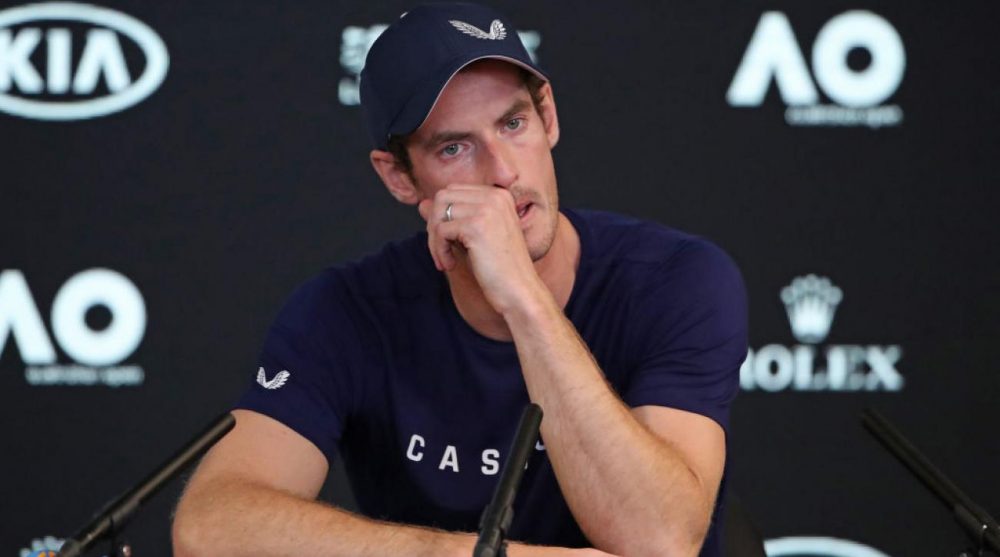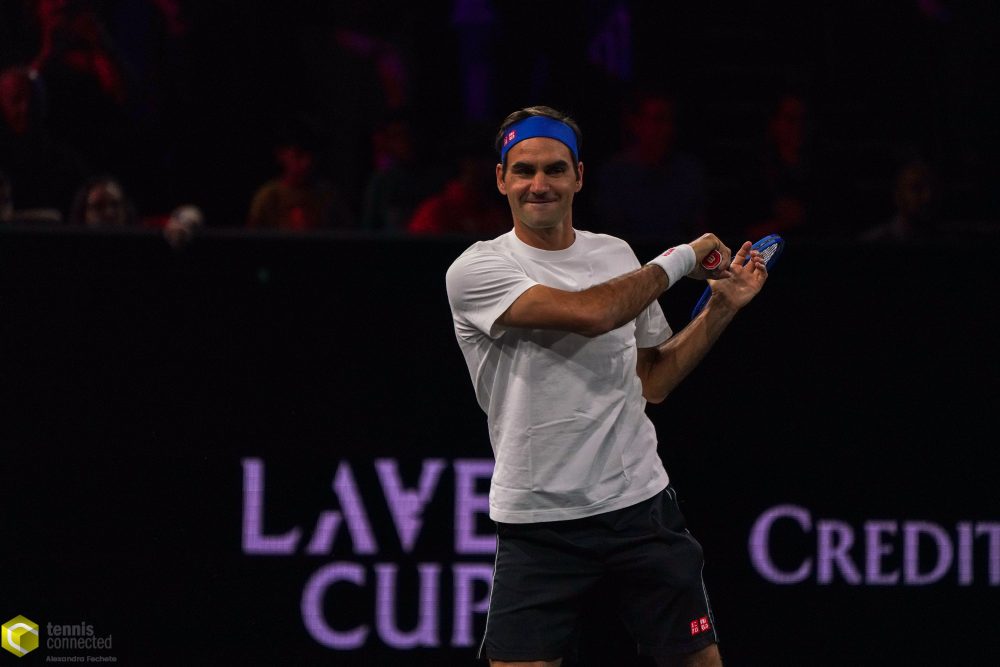Welcome to Tennis Elbow, the column that looks back on the week that was in the world of tennis. This week, Charles Blouin-Gascon toys with a hypothetical regarding Andy Murray’s career.
Remember when men’s tennis had a Big Four?
Really, we used to have that. There was Roger Federer, Rafael Nadal and Novak Djokovic—all of whom you’ve read about this month at different times—but there also was our good friend Andy Murray.
Remember Andy Murray? Remember this guy who’s not quite retired even though he kinda announced about a year and a half ago that he was retiring and now he’s just, like, stuck in a rut?
There was a time when the now-33-year-old, who turned pro all the way back in 2005, was among the greatest forces in men’s tennis. In fact, there was a time when Murray had been so good for so long that we took to putting him alongside the three players mentioned earlier. If men’s tennis was in the golden era, it was in part because of Federer, Nadal and Djokovic, yes, but also Murray.
In retrospect, we can probably say that this was always a little overblown. Sure, the native of Scotland has undeniably been an amazing and extremely great singles player. Throughout his career, he has amassed almost 700 wins against a shade under 200 losses, 46 singles titles (including three Grand Slams) and more than $61 million in total prize money.
Look, in the grand scheme of things these tallies are all solid and great, especially if you factor in Murray’s two Olympic gold medals, his title at the 2016 ATP Finals as well as his ranking of World No. 1 in November 2016.
This is all super impressive.
But we’ll need a little more than “super impressive” if we’re going to put Murray alongside three players who have accumulated a whopping 56 Grand Slam titles, to say nothing else of the rest of their accomplishments.
We absolutely love Murray and have absolutely loved all he has accomplished and represented in men’s tennis, this tall, petulant and imperfect men with hair like Sonic the Hedgehog and who’s always been his own worst critic. But you need to sit on more than three majors if you want to go toe-to-toe with (possibly) the three greatest players in the sport’s history. Murray, unfortunately, is much closer than the likes of Lleyton Hewitt, Stanislas Wawrinka, Gustavo Kuerten or Marat Safin than he is to the Big Three.
Or put another way: in this golden age of men’s tennis, we had a Big Three, then a Big One, then the rest.
In any case, you might have guessed by now that we’re concluding our May series by looking at Murray’s career and how we can most affect it by reversing the result of a handful of important matches.
2008 US Open final – Roger Federer defeats Andy Murray: 6-2, 7-5, 6-2
Look, we’re starting here because this is the very first Grand Slam final that Murray played—and lost. When you famously become one of the very few to lose your first four major finals before ever capturing your first major title, you’re undeniably a strong-willed son of a gun.
But still, could the 33-year-old be sitting on much more than three majors right now in 2020 if he had won the very first Grand Slam final he had competed in? In other words, could everything that followed in Murray’s career been different if he had only won his very first Grand Slam final?
2012 Wimbledon final – Roger Federer defeats Andy Murray: 4-6, 7-5, 6-3, 6-4
Look, we undeniably know what came next. A few months later, Murray finally broke through the Grand Slam glass ceiling and the very next year, he won this very same tournament against Djokovic before actually grabbing a second home Slam. (Not to mention something else we’ve listed below.)
But maybe, just maybe, if Murray becomes the first British player since 1977, and the first British man since 1936, to win a Grand Slam title, if he accomplishes this a year earlier, and then wins Wimbledon the following year again, then suddenly Murray has all the momentum in the world and two straight Wimbledon titles. That’s pretty noteworthy and important.
2016 Roland-Garros final – Novak Djokovic defeats Andy Murray: 3-6, 6-1, 6-2, 6-4
In retrospect, Murray’s 2016 season is patently insane—and if it works as a final stand for a wounded general who was well on his way to losing the war, what a freaking final stand it was: 78 wins against only nine losses, more than $13 million in prize money and nine singles titles, including the 2016 Rio Games gold medal.
But it came so close to being immortal. Murray managed to make the Australian Open and Roland-Garros finals, won the Wimbledon title and lost a heartbreaking fifth-set battle at the US Open against Kei Nishikori. If you flip one or both of these Grand Slam finals, then suddenly this 2016 season should compare favourably to any other great one we’ve seen in men’s tennis over the past decade.
2012 London Olympic Games final – Andy Murray defeats Roger Federer: 6-2, 6-1, 6-4
If there is one thing where Murray can definitely stand tall alongside the triumvirate at the top, if there is one place where the Scot can claim the upper hand, it’s with Olympic gold medals.
But in typical Murray fashion, the one place where he forever holds the advantage is something that’s a little devalued and disregarded historically. It is undeniably true that tennis has only been played at the Olympics since 1988, leaving only eight gold medals awarded in history. Eight gold medals is a very low number, but we should flip it the other way: throughout history, Murray has captured a whopping quarter of all Olympic gold medals.
Now, if you flip this result, a one-sided win in front of his home country crowd and against the same man who had defeated him in the Grand Slam final a mere handful of weeks prior, if you flip this fairytale ending and over-deserved triumph, what do you even make of Murray?
Follow Charles Blouin-Gascon on Twitter @RealCBG















